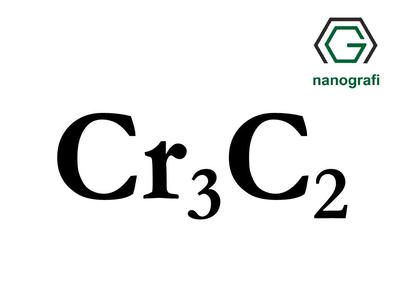Chromium Carbide and It's Properties

Chromium carbide which has the chemical formula of Cr3C2, exists as a gray solid. This compound is extremely hard and corrosion resistant. It is also a refractory compound, which means that it retains its strength at high temperatures as well. These properties make it useful as an additive to metal alloys. When chromium carbide crystals are integrated into the surface of a metal it improves the wear resistance and corrosion resistance of the metal, and maintains these properties at elevated temperatures.
Chromium Carbide Nanoparticles/Nanopowder and Applications
Since Chromium Carbide nanoparticles/nanopowder are hard, their general use is to provide hard wear-resistant coatings on parts that need to be protected. Chromium carbide nanoparticles/nanopowder is used as a thermal spray material for protection of the metal surface beneath and as a coating for seals, bearings, and valve seals. Chromium Carbide nanoparticles/nanopowder provide hot corrosion resistance at elevated temperatures. When combined with other carbides, chromium carbide nanoparticles/nanopowder may be used to form cutting tools. Chromium Carbide nanoparticles/nanopowder also used as fine crystal phase in sintered carbides.
Technical Properties of Our Chromium Carbide (Cr3C2) Nanoparticles/Nanopowder, 99.75+%, 25-125 nm Product
| Purity (%) | 99.75+ |
| AVERAGE PARTICLE SIZE (nm): | 25-125 |
| Color | gray |
| Bulk Density (g/cm3) | 2,80 |
| True Density (g/cm3) | 6,7 |
| Specific Surface Area (m2/g) | 55.0 |
| Crystal Structure | orthorhombic |
| Melting Point (°C) | 1895.0 |
| Boiling Point (°C) | 3800.0 |
| Thermal Expansion Coefficient (K-1) | 10.5 × 10-6 |
You may buy Chromium Carbide (Cr3C2) Nanoparticles/Nanopowder, 99.75+%, 25-125 nm from the link given below:
Comments
Post a Comment